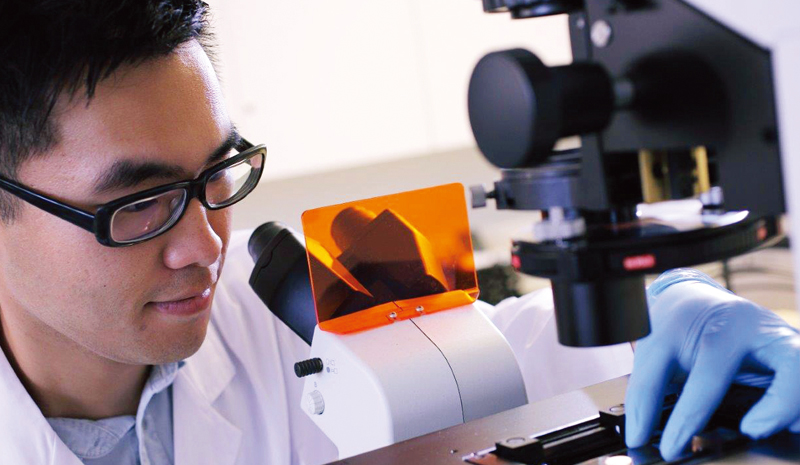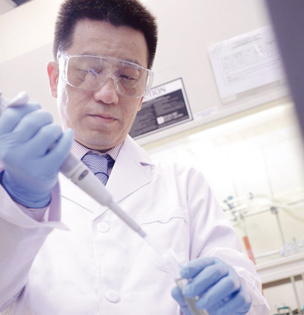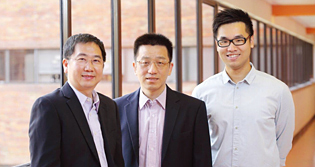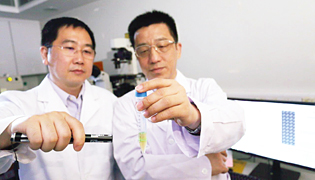
Researcher studies the structures of upconversion nanoparticles.
Toward a prototype device
Since its initial development, the teams have improved the bionsensor’s sensitivity more than tenfold by allowing more space for oligo hybridisation to take place, and testing the reconfiguration on inactivated virus samples. Prof. Hao said that the teams were now working on two improvements to the system. The first involves using a molecular beacon with high specificity towards the virus oligo, which will further improve the biosensor’s specificity and stability.
“The second approach”, he said, “is to fabricate a prototype device for the portable detection of flu viruses based on our heterogeneous biosensor”. Given that the biosensor requires only a portable laser pen and a small detection platform, the demand from frontline medical staff for rapid, on-site detection virus detection is likely to be satisfied in the near future. And while the team is currently focused on flu viruses such as H1N1, H3N1 and H5N1, it has also previously detected the Ebola virus gene in a clinical sample supplied by a Beijing hospital.
Given the significance of this breakthrough, the biosensor has gained the attention of prestigious scientific media outlets such as materialsviews.com. The research results have also been published in Small and ACS Nano, two of the leading international journals in nano-material research. ♦



